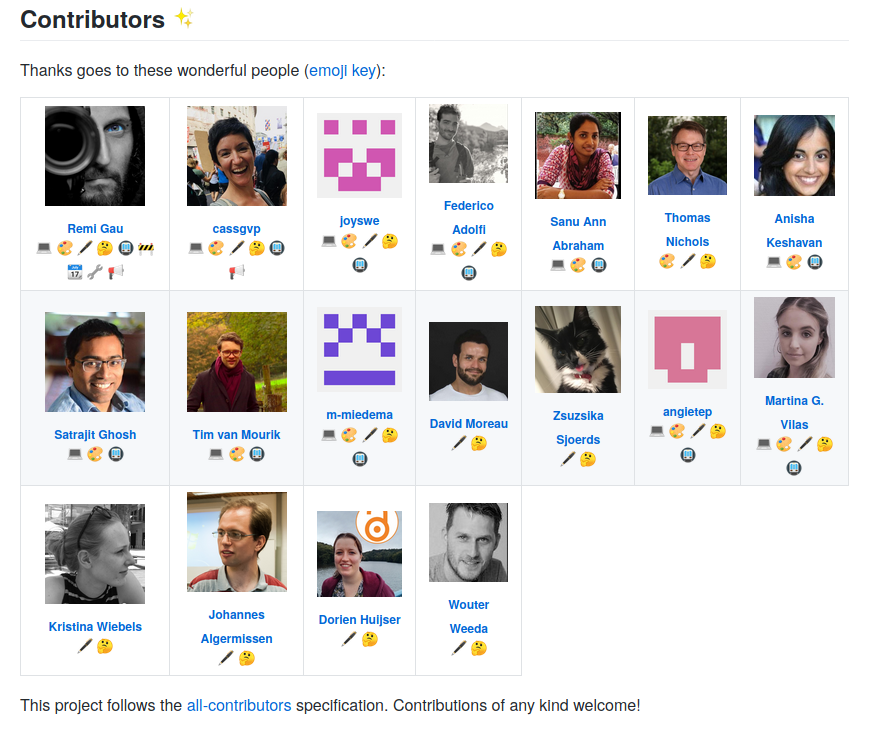eCOBIDAS: a webapp checklist to improve neuroimaging methods & results reporting.
The app: ohbm.github.io/cobidas/#/
Poster: osf.io/wt8fj/
Chat: mattermost.brainhack.org/brainhack/chan…
Video chat: meet.jit.si/cobidas_checkl…
#WIP
osf.io/anvqy/
github.com/Remi-Gau/COBID…
OK now let’s do this...
1) Writing your first neuroimaging paper but unsure what level of detail to put in your methods section.
2) Reviewing a paper and being unsure what information is missing in that paper.
And then having to repeat yourself by copy-pasting parts of your methods section when filling in a journal checklist or uploading your results on @VaultNeuro.
7) Wanting to create pre-registration but not knowing what to put in it.
#ReinventTheWheel
ncbi.nlm.nih.gov/pubmed/22796459
COBIDAS: humanbrainmapping.org/i4a/pages/inde…
The report: biorxiv.org/content/10.110…
If you want to get dizzy you can have a look at it here:
docs.google.com/spreadsheets/d…
This format now becomes machine-readable. We can feed that into some app to render a checklist. And that brings us to the other aspect of that project. How to visualize this checklist?
github.com/ReproNim/repro…
ohbm.github.io/cobidas/#/
fmriprep.org/en/stable/citi…
github.com/incf-nidash/ni…
@aina_puce @CyrilRPernet have been leading a similar effort to create guidelines for electrophysiology studies.
osf.io/a8dhx/
cobidasmeeg.wordpress.com
docs.google.com/spreadsheets/d…
So there is a good chance that the app could cover EEG and MEG studies too.
2019 and @openmrbenelux 2020.
github.com/ohbm/hackathon…
osf.io/har94/
github.com/OpenMRBenelux/…
@cassgvp @IRuotsa @fedeadolfi @akeshavan_ @Tim_van_Mourik @davidwmoreau @ZSjoerds @angietepp @martinagvilas @k_wiebels @johalgermissen @DorienHuijser

Contributors list:
github.com/Remi-Gau/COBID…
1) The transparency checklist @BalazsAczel
shinyapps.org/apps/Transpare…
2) The CLAIM checklist for AI in medical imaging @neuroccino
claim.shinyapps.io/CLAIM/
crednf.shinyapps.io/CREDnf/


